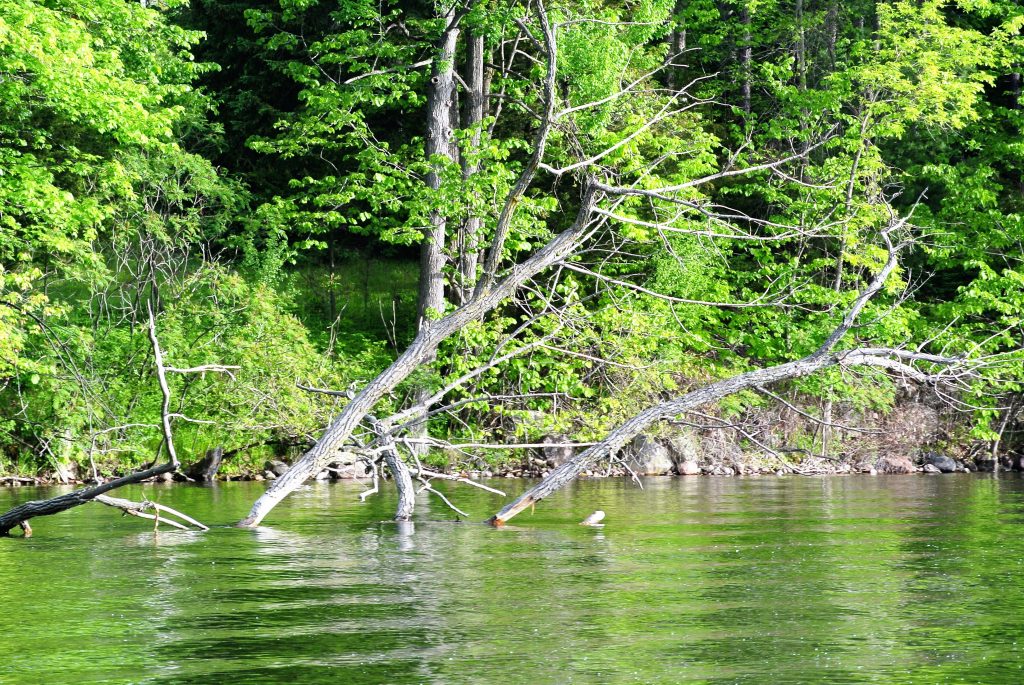Flooding and the elephant in our Muskoka watershed
We still have a lot more to learn about this elephant that we call severe flooding
by Caroline Konarzewski.

Who wants another flood? Not me!
We hold our breath every time a spring storm with heavy rain is predicted here in Muskoka. Will our cottages and homes be safe? Will the roads to our places be washed out? Why don’t they just use the existing dams to better hold back all that water, so it doesn’t cause us so much grief?
There is a problem with that, though. Perceiving the solution to be only controlling the dams is a little like a blindfolded person feeling an elephant’s tail and deciding that an elephant is small and skinny like a snake. It turns out there is a lot more to the beast than dealing only with that tail!
Often, when you think of a “watershed” you think “water in the rivers and lakes.” That water is just the elephant’s tail. The watershed is everything that the rain and melt water touches and moves over, under, around and through before it collects in the lakes and rivers.
The rain that falls in Muskoka’s forests first hits the trees and then all the shrubs and other growing things. The roots of those trees and other plants suck up some of that rainwater. Evapotranspiration, the evaporation of water from the soil and transpiration (think sweating through their leaves) from trees sends much of the water back into the atmosphere.
Along the way this water sometimes encounters wetland areas that slam the brakes on the water flow. The densely packed growth in these wetlands slows the water down and greedily sucks up a lot of it.
Water that has not been absorbed or slowed down has travelled a long way before it eventually reaches the rivers and lakes. Now that is a huge elephant!
There was a time when Muskoka’s forests and wetlands extended all the way to the shores of our waterways. When we built our homes, cottages and other structures along the shores of our waterways, we removed some of the forest and filled in some of those wetlands and replaced them with hard surfaces and shallow rooted grasses. We have removed those natural elements along the shoreline that help reduce the amount of water entering our waterways.
But in thinking only of the shorelines we are like the blindfolded person touching the elephant’s leg. There is more to that elephant than just its leg, we must look further.
Muskoka is a beautiful part of the world and we want to live here. But we have removed forests and filled in wetlands to build our towns, hard surfaces such as roads, driveways, parking lots, patios, and roofs of buildings. Water collects and picks up speed on these hard surfaces, washing out roads and damaging property. We need to look at ways to correct these problems and make changes for the future.
We still have a lot more to learn about this elephant that we call severe flooding. We must stop ignoring to the enormity of the problem and seek new ways of preventing future disasters.
To that end the Province of Ontario has formed the Muskoka Watershed Advisory Group to research the problem and make recommendations to the Province for the future.
An Integrated Water Management (IMW) white paper has been drawn up by the Muskoka Watershed Council (MWC). This document recommends an approach to flood control that includes all aspects of the watershed respecting socio-economic and ecosystem health as well as supporting collaborative solutions specific to Muskoka. Download your copy here: www.muskokawatershed.org/wp-content/uploads/IWMP-WhitePaper-Jan2020.pdf.
We can develop a better understanding of that elephant called flooding. We can learn the best possible ways to live here safely and sustainably, protecting and enhancing the Muskoka paradise we love.
Caroline Konarzewski is a member of the Muskoka Watershed Council.
